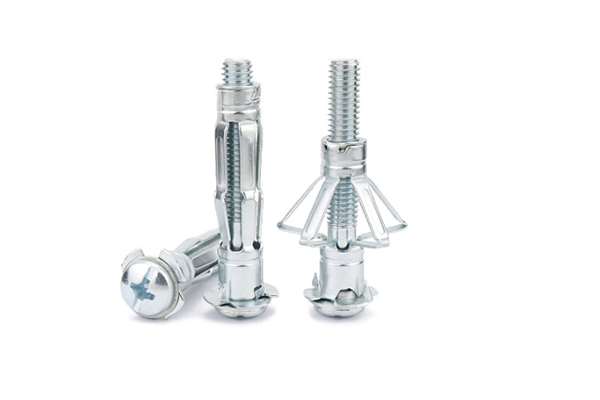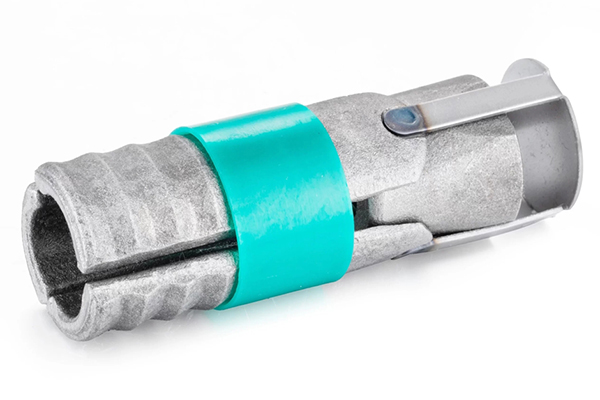This article dives deep into the world of drywall anchors. We’ll explore the weight capacity of different types, from hollow wall anchors to wall anchors designed to handle much weight. Discover which drywall anchors hold the most, ensuring your items stay securely mounted on your plasterboard walls. If you’re tired of things falling off your walls, then you need to read this!
What is a Wall Anchor and Why Do You Need One?
A wall anchor, sometimes called just an anchor, is a fastener designed to provide a secure hold for screws in materials like drywall, also known as plasterboard, or hollow walls. Without an anchor, a screw driven directly into drywall won’t hold much weight. The screw will simply strip the soft material, and whatever you’re trying to hang will eventually fall. Using the correct type of anchor is essential to ensuring your items stay safely and securely mounted. The main function of an anchor is to distribute the weight more evenly.
Think of it like this: imagine trying to hang a picture on a sheet of paper. The paper alone wouldn’t be strong enough. You need something to reinforce it, and that’s what an anchor does for your wall. These small but mighty devices greatly increase the weight capacity of your drywall. A proper wall anchor is designed to expand or grip the material behind the drywall, providing a secure and reliable connection. Knowing the right anchor to use can make all the difference when you need to hang something.
What are the Different Types of Anchors for Drywall?
There are many different types of wall anchors, each designed for specific situations and weight requirements. Knowing the differences between these anchors is crucial for selecting the right one. This will help you make sure whatever you’re hanging stays on the wall.
Some common types of anchors include:
- Drywall Anchors: These are a general term, but often refer to various types of anchors designed specifically for drywall. They are typically made of plastic or metal.
- Plastic Anchors: These are often the easiest anchors to use for lighter loads. They’re made of plastic and are inserted into a pre-drilled hole. Then a screw is used to expand the anchor inside the wall. They can be great for medium weight objects.
- Expansion Anchors: These anchors expand when a screw is inserted, gripping the inside of the drywall. They provide a more secure hold than some other anchors, especially for heavier items.
- Molly Bolts: A molly bolt, also known as a molly anchor, is a type of hollow wall anchor made of metal. They are designed for much weight and are excellent for securing shelves, cabinets, and other items that need a secure hold.
- Toggle Bolts: Toggle bolts are designed for hollow walls. They have a wing that expands behind the drywall, providing a strong grip. Toggle bolts can hold considerable weight.
Let’s look at the weight capacity of drywall anchors in more detail in the next section.
How Much Weight Can Drywall Anchors Hold? Weight Capacity Explained
The weight capacity of drywall anchors varies greatly depending on the type of anchor, the weight of the object you are going to hang, and the quality of the installation. It’s important to choose an anchor that can safely support the amount of weight you’re putting on it. Trying to hang items heavier than the weight limit can cause the anchor to fail, potentially damaging your wall and causing whatever you’re hanging to fall.
Here’s a general overview of the weight rating for different types of anchors:
- Plastic Anchors: These anchors are typically designed for lighter loads, often hold up to 50 pounds, and are suitable for hanging pictures, mirrors, or light shelves.
- Expansion Anchors: These can often hold more weight than plastic anchors, potentially supporting up to 25-50 pounds, depending on the size and design.
- Molly Bolts: Molly bolts are designed to handle much weight, often supporting between 25 and 50 pounds or even more. They are suitable for heavier items like shelves or cabinets.
- Toggle Bolts: Because of their design, toggle bolts can hold a lot of weight, up to 50 pounds. They are an excellent choice when you need to hang something heavier.
Important Note: Always check the weight rating provided by the manufacturer of the anchor. These ratings are based on testing and provide a safe weight limit. The weight of the mounted item should always be less than this weight limit. If you’re unsure, it’s always better to err on the side of caution and choose an anchor with a higher weight capacity.
How to Choose the Right Drywall Anchor for Your Needs
Choosing the right drywall anchor depends on a few key factors:
- Weight of the Object: This is the most important factor. How much weight will the item put on the wall? If you need to hang something that is relatively heavy, a heavy duty anchor for drywall is a must.
- Type of Wall: Are you working with solid wall construction or hollow walls? If you have hollow walls, you’ll need hollow wall anchors, such as molly bolts or toggle bolts, that can grip the inside of the wall.
- What you’re hanging: Are you hanging a light picture, a heavy mirror, or a shelf that will hold books? This will affect the type of anchor you choose.
- Installation Ease: Consider how easy the anchor is to install. Some anchors require a drill and special tools, while others can be installed with just a screwdriver.
By considering these factors, you can narrow down the types of wall anchors that are suitable for your project. If you are uncertain, it is always best to select an anchor that is intended for more weight than you anticipate. Choosing the right anchor will ensure your items are securely mounted.
Step-by-Step Guide: How to Install a Drywall Anchor
Installing a drywall anchor is a relatively simple process. However, it’s important to follow the instructions carefully to ensure a secure installation. Here’s a general guide:
- Gather Your Materials: You’ll need the anchor, a screw (often provided with the anchor), a drill (if required), a drill bit of the appropriate size, a screwdriver, and the item you’re going to hang.
- Prepare the Wall: If the anchor requires a pilot hole, use the drill and drill bit to create a hole in the drywall. Make sure the hole is the correct size for the anchor.
- Insert the Anchor: Insert the anchor into the hole. For some anchors, such as plastic anchors, you might need to tap it gently with a hammer until it’s flush with the wall.
- Insert the Screw: Insert the screw through the item you’re hanging and into the anchor.
- Tighten the Screw: Tighten the screw until the item is securely attached to the wall. Be careful not to overtighten, as this could damage the drywall or the anchor.
Different Anchor Types:
- Plastic Anchors: Easy to install, often involve simply inserting the anchor into a pre-drilled hole. Then, a screw is used to expand the anchor inside the wall.
- Molly Bolts: These require a pre-drilled hole. You insert the molly bolt through the item and then tighten the screw, which pulls the metal sleeve tight against the back of the drywall, creating a secure hold.
- Toggle Bolts: You insert the toggle bolt through the item, and then the toggle wings expand behind the drywall. Tightening the screw secures the item.
What Are the Key Considerations for Hollow Wall Anchors?
When working with hollow walls, special considerations apply. The key is to use hollow-wall anchors that can grip the inside of the wall. Here’s what you need to know:
- Type of Anchor: For hollow walls, hollow wall anchors like molly bolts and toggle bolts are the best choice. They are designed to expand and grip the interior of the wall, providing a secure hold.
- Wall Thickness: Consider the thickness of your drywall. Some anchors are designed for specific wall thicknesses.
- Weight Capacity: Always choose an anchor that can handle the amount of weight you’re hanging. Heavy-duty hollow wall anchors are a good option for heavier items.
- Installation: Follow the manufacturer’s instructions carefully to ensure the anchor is installed correctly.
Using the right hollow wall anchor is crucial for achieving a secure and reliable installation in hollow walls. Proper installation is important, so you don’t have to worry about much damage.
Drywall Anchor Screw Size and Compatibility
The screw size is an important factor when choosing drywall anchors and anchors and screws. Here’s a breakdown:
- Anchor Compatibility: Make sure the screw is compatible with the anchor. The screw should fit snugly into the anchor and should be long enough to pass through the item you’re hanging and engage with the anchor.
- Screw Size: The screw size is usually specified on the anchor packaging. Using the wrong screw size can result in a loose or damaged installation.
- Thread Type: Make sure the screw has the correct thread type for the anchor. This ensures a secure grip.
- Screw Length: The screw needs to be long enough to securely attach the item to the anchor. Too short, and it won’t hold. Too long, and it may stick out the back.
Choosing the right screw size is important. This is essential for a secure and reliable installation. You can usually find the correct screw size on the anchor packaging.
Common Mistakes to Avoid When Using Drywall Anchors
To ensure the best results, it’s important to avoid these common mistakes:
- Overloading the Anchor: Exceeding the weight limit of the anchor is a surefire way to cause failure. Always check the weight rating and choose an anchor that can safely support the amount of weight.
- Using the Wrong Anchor Type: Don’t use plastic anchors for heavy items or try to install standard anchors in hollow walls. Choosing the wrong type of anchor can lead to an insecure installation.
- Incorrect Installation: Not following the installation instructions carefully can compromise the anchor’s performance. Ensure the drill hole is the correct size and the anchor is inserted and secured properly.
- Overtightening the Screw: Overtightening the screw can strip the anchor or damage the drywall. Tighten the screw until the item is secure, but avoid applying excessive force.
- Ignoring Wall Studs: Always try to locate and use a wall stud whenever possible, especially for heavy items. Studs offer a much more secure hold than drywall alone.
Avoiding these mistakes will help you achieve a secure and reliable installation, whether you’re using threaded drywall anchors or other types of wall anchors.
Frequently Asked Questions About Drywall Anchors
Here are some frequently asked questions about drywall anchors:
- Can I use drywall anchors in plaster walls?
Yes, but the performance may vary. Consider the age and condition of the plaster. Pilot holes are often required, and the correct type of anchor is crucial. - How do I find a stud behind the drywall?
Use a stud finder. These tools can help you locate the wall studs. Studs offer the most secure hold. - What if I need to hang something heavier than the weight capacity of drywall anchors?
If you need to hang something heavy, it’s best to mount it directly to a wall stud. Alternatively, use heavy-duty hollow wall anchors, such as toggle bolts, that have a higher weight capacity. - What do I do if I strip the screw hole?
If you strip the hole, you can try using a larger screw, filling the hole with a plaster repair compound, or switching to a different type of anchor. - Are metal anchors better than plastic?
Metal anchors like molly bolts are generally stronger and can hold more weight. However, plastic anchors are often easier to install for lighter items. - How many anchors do I need to use?
For lighter items, two anchors may be enough. For heavier items, use additional anchors for increased support. The amount of weight and the weight of the mounted item should determine how many anchors you need.
This information should cover everything you need to know about using anchors for your dry wall!
Where to Buy Drywall Anchors
You can find drywall anchors at most hardware stores, home improvement centers, and online retailers. Here are some common places:
- Hardware Stores: Local hardware stores usually have a good selection of types of wall anchors and can offer advice.
- Home Improvement Centers: Big-box stores like Home Depot and Lowe’s have extensive anchor selections and knowledgeable staff.
- Online Retailers: Amazon and other online retailers offer a wide variety of anchors and allow you to compare prices and read reviews.
When buying, be sure to check the weight capacity and the type of fastener. Don’t hesitate to request a quote to find the best prices.
Final Thoughts and Summary
Choosing the right drywall anchor is crucial for ensuring your items stay securely mounted on your walls. Understanding the different types of anchors, their weight capacity, and the proper installation techniques will prevent frustrations and costly repairs. Selecting the correct anchor and following the installation instructions is key to a secure hold.
Here’s a quick summary of the most important things to remember:
- Choose the type of anchor based on the weight of the object and the type of wall.
- Always check the weight rating and choose an anchor that can safely support the load.
- Follow the installation instructions carefully.
- When working with hollow walls, use hollow wall anchors such as molly bolts or toggle bolts.
- If you are not sure, it is best to select an anchor that is intended for more weight than you anticipate.
- Consider the screw size and make sure it is compatible with the anchor.
- Avoid common mistakes such as overloading the anchor or not using the right type of fastener.
Now that you’ve got the knowledge, you can confidently choose the right wall anchor for your next project! For more information or to contact us today, visit our website, where you see what’s available!
We offer a comprehensive range of high-quality self-drilling anchor systems and drilling tools. Contact us today and request a quote!
Here are some of our self-drilling anchor tools factory products to consider, to increase the security of your wall and ceiling:
- Rock Drilling Bits – https://www.cnrockbolt.com/rock-drilling-bits/
- Tapered drill pipe – https://www.cnrockbolt.com/tapered-drill-pipe/
- Shank adapters – https://www.cnrockbolt.com/shank-adapters/
— END OF FILE —
Post time: 2 月-21-2025
















